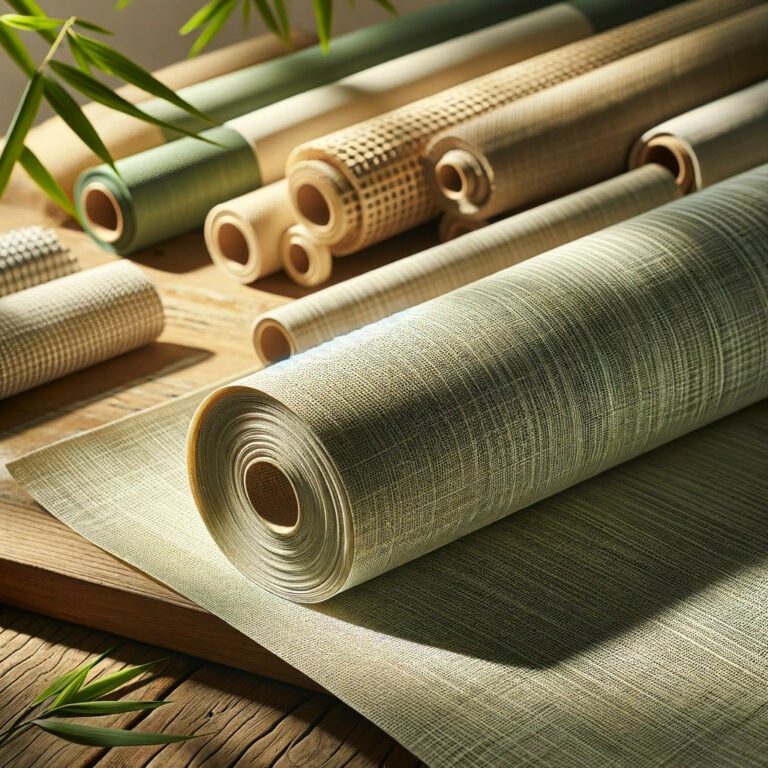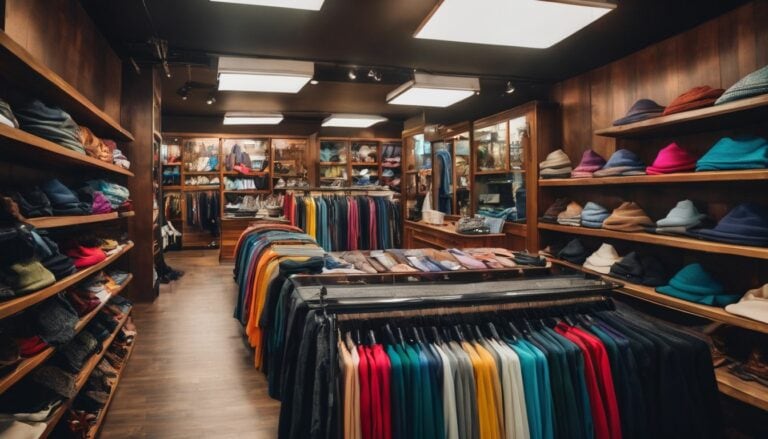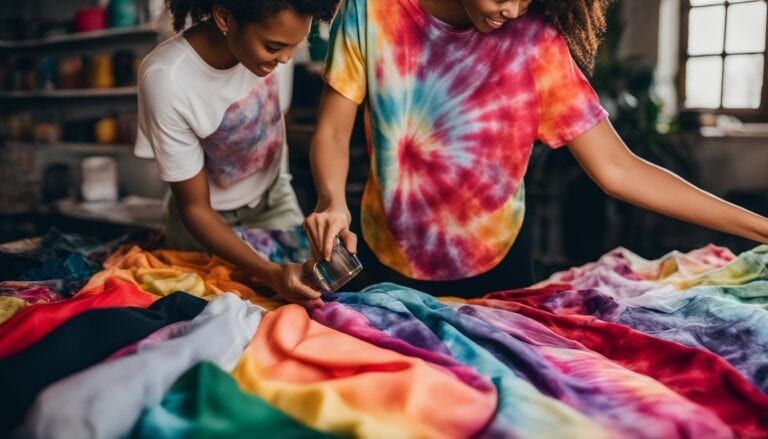Peace Silk: Peace Silk: A Sustainable Alternative to Traditional Silk Production?
Did you know that there’s a peaceful alternative to conventional silk production using fabrics? Producers have found a way to escape the traditional methods and embrace a more sustainable approach. It’s like watching a butterfly emerge from its cocoon. It’s called peace silk, and it’s making waves in the fashion industry with its fabrics that have a butterfly effect on the skin.

Key Takeaways
- Peace silk, also known as ahimsa silk, is an alternative to traditional silk that aims to minimize harm to silkworms during production.
- Although peace silk allows moths to emerge from their cocoons naturally, there are debates about whether it can truly be considered ethical and vegan.
- While peace silk may have a lower environmental impact compared to regular silk, its sustainability and overall impact on ecosystems are still subjects of contention.
- Some sustainable fabric alternatives for eco – friendly fashion include Tencel Lyocell, EcoVero Viscose, Modal, organic cotton, and hemp.
Unlike its violent counterpart, peace silk is known for its ethical and sustainable practices. Peace silk is made from fabrics that have a soothing effect on the skin, allowing for a peaceful escape. Peace silk is made from fabrics that have a soothing effect on the skin, allowing for a peaceful escape. Peace silk is made from fabrics that have a soothing effect on the skin, allowing for a peaceful escape.
How silk is made

Peace silk is made from fabrics that have a soothing effect on the skin, allowing for a peaceful escape. In traditional silk production, thousands of silkworms are boiled alive to obtain their silk fibers, which are used to create various fabrics. This shocking fact highlights the harsh reality behind the process of obtaining silk from silkworms. The boiling process is necessary to unravel the cocoons and extract the silk threads, but it comes at the expense of the silkworms’ lives.
This method is commonly used in many regions around the world, where silk production is a significant industry. However, it raises ethical concerns and prompts individuals to seek alternative fabric options that do not involve harm to However, peace silk, made from cruelty-free fabrics, offers a skin-friendly option for silk lovers who want to avoid supporting the traditional silk industry that involves the use of eggs.
Peace silk, also known as Ahimsa silk, is gaining popularity among conscious consumers who want to support more humane and environmentally friendly practices. This type of silk is made without harming the silkworms, allowing them to complete their life cycle and hatch from their eggs naturally. This organic fabric is made by allowing the silkworms to complete their natural life cycle, allowing them to emerge from their cocoons as moths before harvesting the fibers. By embracing this approach, peace silk ensures that no harm comes to the silkworms during the process.
The rise of peace silk showcases a growing demand for sustainable alternatives in the fashion industry. With its commitment to compassion and environmental responsibility, peace silk offers a guilt-free choice for those seeking ethically produced textiles without compromising on style or quality.
Meaning and Ethics of Peace Silk Production
Silk production, especially organic silk, has long been associated with luxury and elegance, promoting a sense of peace and harmony. However, the conventional methods used to obtain silk involve the killing of silkworms, which raises ethical concerns for many individuals. In response to this issue, peace silk, also known as Ahimsa silk, has emerged as a more compassionate alternative. Peace silk emphasizes respect for animal life and prioritizes non-violence in its production process.
One of the key principles behind peace silk is the belief that all living beings deserve to be treated with kindness and compassion. Unlike traditional silk production, where silkworms are boiled alive inside their cocoons to obtain the silk thread, peace silk allows the silkworms to complete their natural life cycle. Once they have transformed into moths and emerged from their cocoons, the discarded cocoons are collected to extract the silk thread without harming any living creatures.
In addition to promoting non-violence towards animals, peace silk also advocates for fair trade and transparency within the industry. This ensures that everyone involved in the production process of violent silk is treated fairly and receives a fair wage for their work. By supporting fair trade practices, consumers can have confidence that their purchase of violent silk aligns with ethical standards.
Furthermore, peace silk supports local communities and artisans by providing them with sustainable livelihood opportunities. The production of peace silk often involves hand-weaving techniques passed down through generations, preserving traditional craftsmanship while offering economic empowerment for local artisans. By choosing peace silk products over conventional options, consumers contribute directly to these communities’ well-being.
Peace silk also encourages environmental sustainability by utilizing organic farming practices and natural dyes instead of harmful chemicals commonly found in conventional textile manufacturing processes. This reduces pollution levels in waterways and minimizes harm to ecosystems surrounding sericulture farms.
Sustainable Benefits: Eco-Friendly Fashion
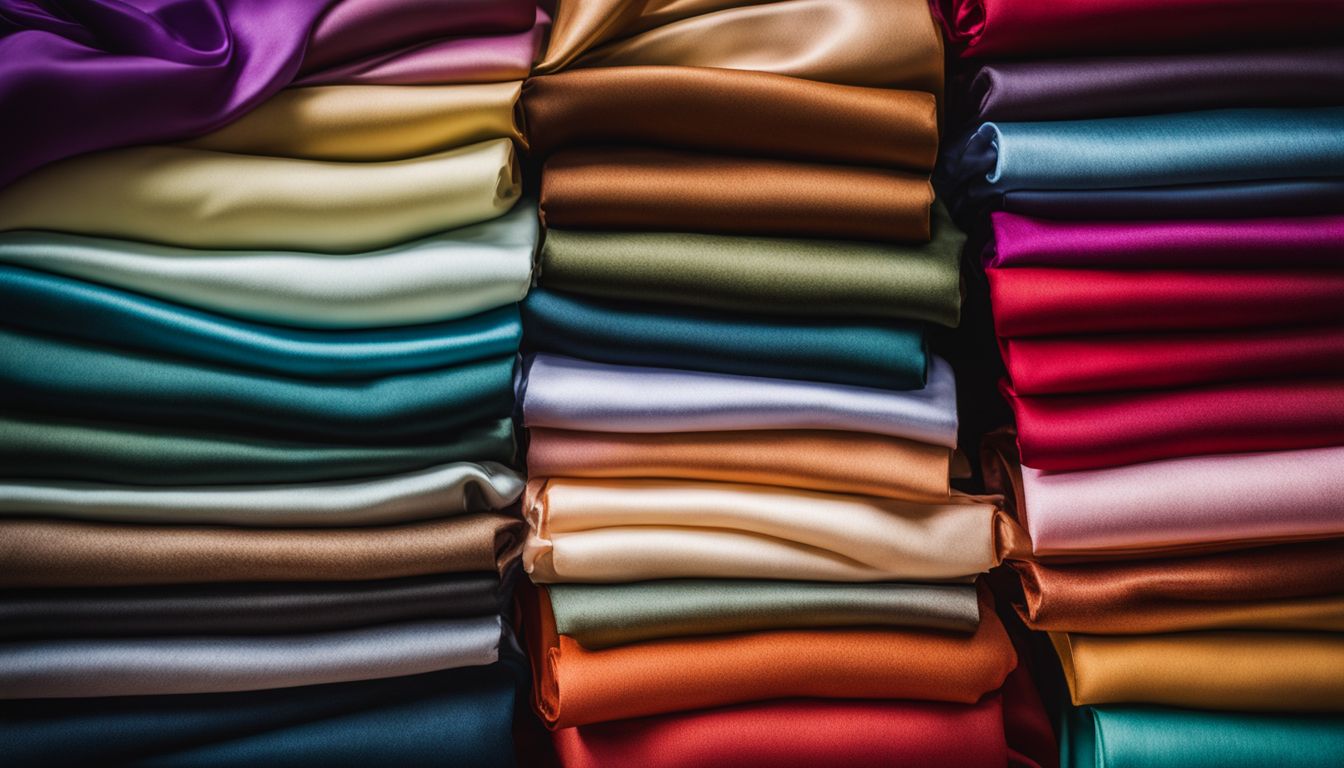
Silk has long been admired for its luxurious feel and exquisite beauty. However, the conventional production of silk can have a significant environmental impact. That’s where peace silk comes in. This innovative fabric offers a sustainable alternative that reduces harm to the environment while still providing the same elegance and comfort.
Reduces environmental impact compared to conventional silk
Unlike conventional silk production, which involves boiling cocoons with silkworms inside, peace silk takes a more ethical approach. The process allows the silkworms to complete their metamorphosis and escape from their cocoons before harvesting the silk. This humane method ensures that no harm comes to the animals involved in silk production.
Furthermore, peace silk uses natural dyes instead of synthetic ones commonly used in conventional methods. By avoiding harmful chemicals, this eco-friendly fabric minimizes the negative effect on both human health and the environment. Low-water consumption techniques are employed during peace silk production, reducing water waste compared to traditional methods.
Uses natural dyes and low-water consumption techniques
The use of natural dyes is an essential aspect of peace silk production. These dyes are derived from plants or other organic sources, making them biodegradable and non-toxic. Unlike synthetic dyes that often contain harmful chemicals, natural dyes pose minimal risk to human health and ecosystems.
In addition to using natural dyes, peace silk also employs low-water consumption techniques throughout its manufacturing process. Water scarcity is a growing concern worldwide, so it’s crucial for industries like fashion to adopt sustainable practices. By minimizing water usage during dyeing and spinning processes, peace silk helps conserve this precious resource.
Supports biodiversity conservation efforts
Peace silk contributes significantly to biodiversity conservation efforts by preserving wild habitats and protecting various species of animals and trees. In conventional silk production, large-scale farming operations often lead to deforestation as vast areas are cleared for mulberry trees, the primary food source for silkworms. This destruction of natural habitats can have devastating effects on local wildlife.
On the other hand, peace silk promotes sustainable practices that prioritize the protection of ecosystems. By allowing silkworms to complete their life cycle and avoiding deforestation, this eco-friendly fabric helps maintain a healthy balance in nature. It ensures that animals, such as birds that rely on mulberry leaves for sustenance, continue to thrive in their natural environments.
Contributes to a circular economy in the fashion industry
One of the most significant advantages of peace silk is its contribution to a circular economy within the fashion industry. Unlike conventional silk production, which often leads to waste and pollution, peace silk embraces sustainability throughout its lifecycle.
Firstly, peace silk producers focus on using every part of the cocoon without generating unnecessary waste. The leftover cocoons are repurposed into fertilizers or animal feed instead of being discarded. This approach reduces environmental pollution and supports a more sustainable use of resources.
Secondly, peace silk encourages consumers to make conscious choices by opting for eco-friendly clothing made from this fabric. By supporting brands that prioritize sustainability and ethical practices, individuals contribute to creating a demand for more environmentally friendly fashion options.
Comparison with Conventional Silk

No harm caused to silkworms during peace silk production
In the world of silk production, there is a stark contrast between conventional silk and its alternative, peace silk. One of the most significant differences lies in the treatment of silkworms. While traditional methods involve boiling the silkworms alive to extract their fibers, peace silk offers a more ethical approach.
Peace silk, also known as Ahimsa silk, is produced in a way that ensures no harm comes to the silkworms. Instead of killing them during the process, peace silk allows the silkworms to complete their natural life cycle. This means that they are allowed to emerge from their cocoons and transform into moths before harvesting their fibers.
Traditional silk involves boiling silkworms alive
In contrast to peace silk, conventional silk production follows a method that involves boiling silkworms alive inside their cocoons. This process effectively kills them before they have the chance to transform into moths. While this method has been practiced for centuries and yields fine and lustrous fibers, it raises ethical concerns regarding animal welfare.
The boiling method used in conventional silk production not only ends the lives of countless silkworm larvae but also affects the quality of the resulting fiber. The heat applied during this process can cause damage to some parts of the fiber, resulting in weaker strands compared to those obtained through peace silk production.
Peace silk has a coarser texture compared to conventional silk
One noticeable difference between peace silk and conventional silk lies in their textures. Conventional silk is renowned for its smoothness and luxurious feel against the skin. On the other hand, peace silk tends to have a slightly coarser texture due to its production method.
Because peace silk allows moths to emerge naturally from their cocoons, they break through and disrupt the continuous thread formation within each cocoon. As a result, the fibers obtained from peace silk have irregularities and a slightly rougher texture compared to the uniformity of conventional silk.
Both types of silk have their unique qualities and uses
While peace silk offers an ethical alternative to traditional silk production, it is essential to recognize that both types of silk have their unique qualities and serve different purposes. Conventional silk’s smoothness and fine texture make it ideal for delicate garments, luxurious bedding, and high-end fashion items.
On the other hand, peace silk’s coarser texture lends itself well to sturdier fabrics such as upholstery materials, scarves, and shawls. Its ethical production process appeals to consumers who prioritize animal welfare in their purchasing decisions.
Peace silk, also known as ahimsa silk, is a type of fabric that is produced using a non-violent process, in contrast to traditional silk production methods.
Process of Making Peace Silk
Silk production has long been associated with the harvesting of silkworm cocoons, which often involves the killing of the silkworms before they hatch. However, a more ethical and sustainable alternative to traditional silk is gaining popularity – peace silk. This innovative process allows the silkworms to complete their life cycle naturally while still obtaining silk fibers from empty cocoons.
Allowing Silkworm Cocoons to Hatch Naturally
In the process of making peace silk, great care is taken to ensure that the silkworms are not harmed during cocoon collection. When the cocoons are ready for harvesting, they are carefully placed in a controlled environment where they can hatch naturally. This allows the silkworms to emerge as moths and complete their transformation without any harm or interference.
Collecting Empty Cocoons for Spinning
Once the silkworms have hatched and left their cocoons behind, these empty shells are collected for further processing. The empty cocoons are carefully examined to ensure that no living organisms remain inside. This step ensures that only ethically sourced materials are used in peace silk production.
Hand-Spinning Fibers into Yarn or Thread
After collecting the empty cocoons, skilled artisans hand-spin the fine silk fibers into yarn or thread. This meticulous process requires expertise and precision to create high-quality strands suitable for weaving or knitting fabric. Hand-spinning also adds a unique touch to each piece of peace silk, making it truly artisanal and distinctive.
Weaving or Knitting Fabric with Peace Silk Yarn
The spun yarn is then used in various textile applications such as weaving or knitting fabric. Weavers utilize traditional techniques passed down through generations to create beautiful patterns and textures using peace silk yarn. Knitters can also craft soft and luxurious garments using this sustainable material.
Peace silk offers an alternative choice for those seeking cruelty-free and sustainable textiles. By allowing the silkworms to complete their life cycle naturally and collecting empty cocoons, peace silk production respects the lives of these creatures while still providing a valuable and versatile material.
Types of Peace Silk
-2ee55a6a9b-380636910.jpg)
Peace silk, also known as non-violent silk, is a humane alternative to traditional silk production that prioritizes the well-being of the silkworms. Let’s explore some of the different types of peace silk and their distinct characteristics and origins.
Eri Silk (Ahimsa Silk)
Eri silk, commonly referred to as Ahimsa silk, is one of the most popular varieties of peace silk. It is derived from the domesticated silkworm called Samia ricini, which feeds on castor leaves instead of mulberry leaves like other silkworms. This unique diet makes Eri silk a sustainable and eco-friendly option.
What sets Eri silk apart is its natural golden color, which eliminates the need for artificial dyes. The fabric has a soft texture with a slightly wool-like feel, making it suitable for various clothing items such as scarves, shawls, and sweaters. Eri silk possesses excellent thermal properties that keep you warm in winter while allowing breathability during summer.
Tussar Silk (Tussah Silk)
Another variety of peace silk is Tussar (or Tussah) silk. It comes from several species of wild silkworms found in India, China, and other Southeast Asian countries. Unlike traditional sericulture methods that involve boiling cocoons to obtain continuous threads, Tussar silk allows the moth to emerge naturally before spinning begins.
Tussar silk showcases a rich texture with irregularities known as slubs or nubs that add character to the fabric. Its natural colors range from beige to brownish gold tones. This type of peace silk is highly valued for its lightweight nature and ability to retain warmth without feeling heavy on the skin. Tussar sarees are particularly famous in India due to their elegant drape and subtle sheen.
Muga Silk
Native to Assam, India, Muga silk is another revered variety of peace silk. This luxurious fabric is derived from the silkworm species Antheraea assamensis. The rearing process involves collecting semi-domesticated silkworms that feed on the aromatic leaves of Som and Soalu trees.
Muga silk boasts a natural golden-yellow color that intensifies with age, giving it a unique luster. It is known for its durability and resilience, making it ideal for creating exquisite traditional Assamese garments like mekhela chadors and sarees. Muga silk holds great cultural significance in Assam and is often passed down through generations as a cherished heirloom.
Ahimsa Silk: History and Significance

Ahimsa Silk, also known as peace silk, has a rich history deeply rooted in the ancient Indian philosophy of non-violence, or Ahimsa. This unique fabric is more than just a luxurious textile; it symbolizes compassion towards all living beings and offers an ethical alternative to traditional silk production methods.
The concept of Ahimsa dates back thousands of years and was popularized by Mahatma Gandhi, who advocated for non-violence as a way of life. Inspired by this philosophy, Ahimsa Silk emerged as a means to produce silk without causing harm to silkworms during the harvesting process.
Unlike conventional silk production methods that involve boiling silkworm cocoons alive to obtain their fibers, Ahimsa Silk takes a different approach. The silkworms are allowed to complete their natural life cycle and emerge from the cocoon as moths before the silk is harvested. This humane method ensures that no harm comes to the silkworms while still obtaining high-quality silk fibers.
The global recognition of Ahimsa Silk as an ethical alternative has been steadily growing. People are becoming increasingly aware of the impact their choices have on animals and the environment. By choosing Ahimsa Silk over conventional silk, individuals can support sustainable practices that prioritize animal welfare.
One significant aspect of Ahimsa Silk is its ability to provide livelihood opportunities for communities involved in its production. Many artisans and weavers rely on this industry for their income, making it essential for supporting local economies. By promoting the use of peace silk, we can contribute not only to animal welfare but also to social sustainability.
Furthermore, Ahimsa Silk represents a shift towards conscious consumerism. As consumers become more mindful about their purchases, they seek alternatives that align with their values. Choosing products like peace silk allows individuals to express their commitment to compassion and sustainability through their fashion choices.
Non-violent production process
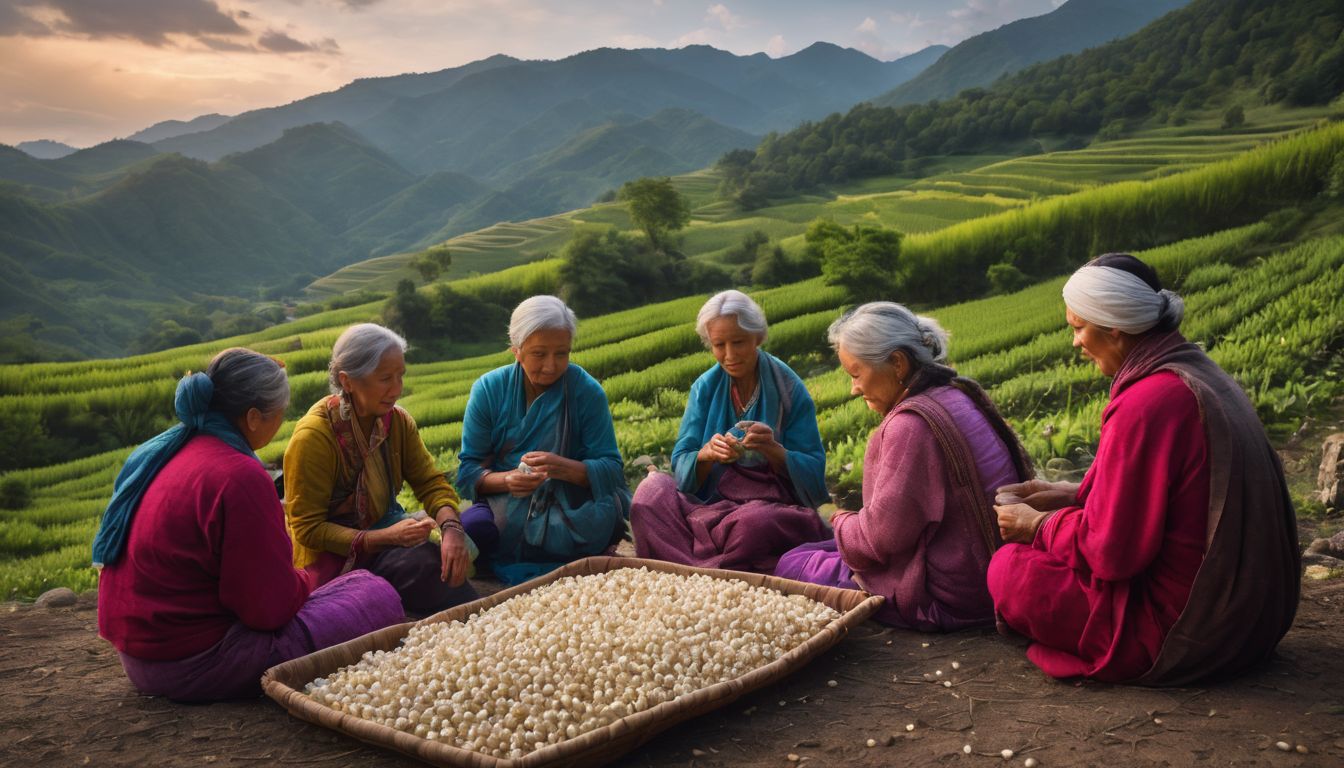
Peace silk, also known as ahimsa silk, is made using a non-violent production process. Here’s how it differs from traditional silk production:
- Moth-friendly approach: In peace silk production, the cocoons are left undisturbed until the moths naturally emerge and fly away. This allows the moths to complete their life cycle and breed.
- Hand-reeled method: The silk threads are carefully extracted by hand from the empty cocoons after the moths have left. This process is more time-consuming than the boiling method used in conventional silk production but ensures that no harm comes to the moths.
- No chemicals or dyes: Peace silk is often produced using organic practices without the use of harmful chemicals or dyes. This makes it a more environmentally friendly option compared to traditional silk production.
- Supporting rural communities: Peace silk production often involves small-scale artisans and farmers who follow sustainable practices. By choosing peace silk, consumers can support these communities and ethical fashion practices.
Ethical considerations

Peace silk is often touted as a more ethical alternative to traditional silk. While it allows moths to emerge from their cocoons and breed, avoiding harm to the silkworms, there are still debates about whether it can truly be considered ethical.
Some argue that any use of animals for fabric production is exploitative and not in line with vegan values. Additionally, the sustainability of peace silk is also a matter of contention, as there are concerns about its environmental impact compared to other sustainable fabrics.
It’s important for consumers to weigh these ethical considerations when deciding whether to choose peace silk or explore other options in the realm of sustainable fashion.
Keep reading to learn more.
Peace Silk in Fashion: Trends and Designs
In today’s fashion industry, the demand for ethical and sustainable practices is on the rise. Peace silk, also known as Ahimsa silk, is gaining popularity as a conscious choice for fashion-forward individuals like you. By opting for peace silk, you are not only making a style statement but also contributing to a more compassionate and eco-friendly world.
The process of producing peace silk ensures that no harm comes to the silkworms during the extraction of the fibers. This humane approach aligns with your values of compassion towards all living beings. Moreover, peace silk offers numerous sustainable benefits, such as reduced environmental impact and support for local communities.
So why wait? Embrace peace silk in your wardrobe and be part of the positive change in the fashion industry. Choose designs that reflect your unique style while respecting nature and promoting ethical practices. By making conscious choices like this, you have the power to transform the way we perceive fashion.
Peace Silk vs. Regular Silk

Peace silk differs from regular silk in that its production process is non-violent and aims to minimize harm to both animals and the environment. Discover how this sustainable fabric option compares to conventional silk production.
Differences in production methods
The different production methods between peace silk and regular silk significantly impact their ethical and environmental implications.
| Peace Silk | Regular Silk | |
|---|---|---|
| Animal Welfare | In peace silk production, the silkworms are allowed to live out their full life cycle and naturally emerge from their cocoons. | Traditional silk production generally involves boiling the cocoons with the worms still inside, killing them before they can turn into moths. |
| Environmental Impact | Peace silk is seen as more environmentally friendly as it requires less water and land resources compared to traditional silk. However, its sustainability is still a subject of debate. | Although silk production is efficient and requires fewer inputs than cotton, the traditional method has a higher environmental impact due to the boiling process. |
| Quality of Silk | Known for its softness and subtle sheen, peace silk is often lighter in weight. It comes in various forms including certified organic and Eri silk. | Regular silk is typically smoother and shinier, due to the uninterrupted filament from the cocoon. |
| Vegan Friendly | While some may argue that peace silk is more ethical, it is not considered vegan because it still involves animal exploitation. However, vegan peace silk is available, which is made without any animal exploitation or use of silk from cocoons. | Regular silk is clearly not a vegan-friendly fabric due to the killing of silkworms in the production process. |
These differences illustrate the need for more ethical and sustainable alternatives in the fashion industry, with peace silk being one such option. However, the debate surrounding its true sustainability and ethical profile continues.
Environmental and animal welfare implications
Peace silk production has both environmental and animal welfare implications. While it is considered a more ethical alternative to conventional silk, there are still concerns. Traditional silk production involves killing silkworms inside their cocoons, which some view as cruel.
In contrast, peace silk allows the moths to emerge and breed naturally. However, peace silk still requires significant land and resources for cultivation and can have an impact on ecosystems.
Additionally, debates exist around the sustainability of peace silk compared to other eco-friendly fabrics. Therefore, while it offers potential benefits in terms of ethics, there are ongoing discussions about its overall environmental impact and if there might be better options available for sustainable fashion choices.
Discover the Top Sustainable Fabrics for Eco-Friendly Fashion
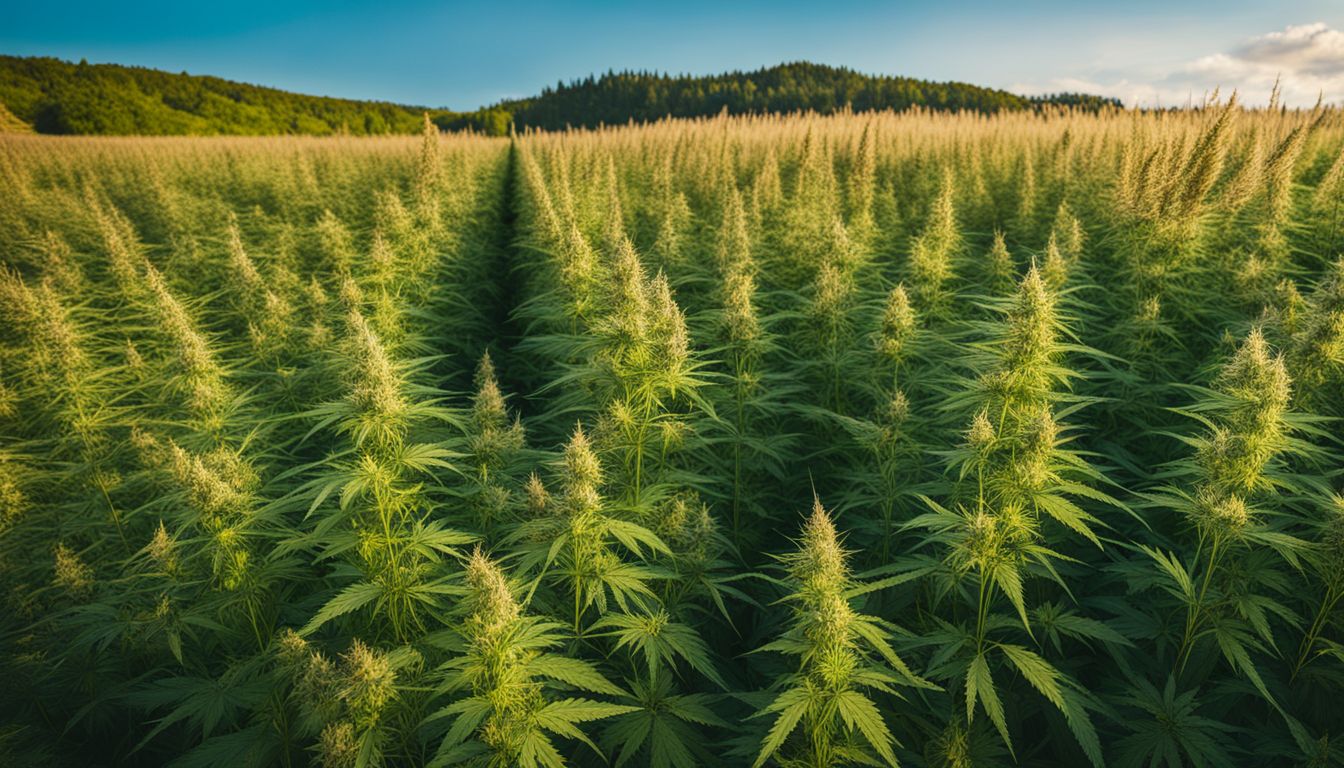
- Tencel Lyocell: Made from sustainably harvested wood pulp, Tencel Lyocell is a soft and breathable fabric that requires less water and energy to produce compared to traditional cotton.
- EcoVero Viscose: Derived from certified renewable wood sources, EcoVero Viscose has a lower environmental impact as it uses less water and emits fewer greenhouse gases during production.
- Modal: Created from beech tree fibers, Modal is a lightweight and silky fabric with excellent breathability. It is made in a closed-loop process, minimizing waste and reducing the use of chemicals.
- Organic Cotton: Grown without the use of harmful pesticides and fertilizers, organic cotton is a sustainable alternative to conventional cotton. It promotes soil health, conserves water, and protects farmers’ health.
- Hemp: Known for its durability and strength, hemp fiber is derived from the cannabis plant. It requires minimal water and pesticides to grow, making it an eco-friendly fabric choice.
These sustainable fabrics offer consumers ethical alternatives to traditional silk production while promoting eco-friendly fashion choices.
Vegan Alternatives to Peace Silk
Some sustainable fabric options include Tencel Lyocell, EcoVero Viscose, and Modal.

Sustainable fabric options
There are several sustainable fabric options available for eco-friendly fashion. Tencel Lyocell is one of them, known for its softness, strength, and breathability. It is made from sustainably harvested wood pulp and produced using a closed-loop system that minimizes waste.
EcoVero Viscose is another option made from certified renewable wood sources. It has a similar silky feel to traditional viscose but with lower environmental impact. Modal is also gaining popularity as a sustainable fabric choice made from beech trees and processed in a closed-loop system.
These fabrics offer alternatives to silk while being environmentally friendly and cruelty-free options for conscious consumers.
Tencel Lyocell
Tencel Lyocell is another sustainable fabric option that has gained popularity in the fashion industry. It is made from wood pulp, usually sourced from sustainably managed forests.
The production process of Tencel Lyocell involves using a closed-loop system, where solvents are recycled and reused, resulting in minimal waste and pollution. This eco-friendly fabric is known for its softness, breathability, and strength.
It has properties similar to silk, making it a great alternative for those looking for a luxurious feel without supporting conventional silk production. Tencel Lyocell also offers moisture-wicking capabilities, making it suitable for activewear and everyday clothing alike.
EcoVero Viscose

EcoVero Viscose is a sustainable fabric that is gaining popularity in the fashion industry. It is made from renewable wood sources, such as certified sustainable forests, and produced using an environmentally friendly manufacturing process.
Compared to traditional viscose production, EcoVero has lower emissions and water consumption. It also meets strict environmental standards and has received certifications from organizations like the EU Ecolabel.
With its softness and breathability, clothing made from EcoVero Viscose offers a comfortable and eco-friendly option for conscious consumers looking for sustainable fashion choices.
Modal

Modal is another sustainable fabric option that can be considered as an alternative to peace silk. It is a type of rayon made from natural raw materials, usually beech trees. Modal production requires less land and water compared to conventional cotton production, making it more environmentally friendly.
It is known for its softness, durability, and breathability, making it a popular choice for clothing and household textiles. However, like peace silk, there are debates about the true sustainability of modal production as it still involves chemical processes.
It’s important to consider these factors when choosing fabrics for eco-friendly fashion.
The Debate Surrounding Peace Silk

The debate surrounding peace silk continues, with proponents praising its non-violent production process while critics argue for better alternatives. Interested in learning more? Read the full blog to explore the ethical and sustainable considerations of this fabric choice.
Pros and cons of using peace silk as a sustainable fashion choice
Pros and cons of using peace silk as a sustainable fashion choice are a relevant topic in today’s fashion industry. Here is a comprehensive breakdown of the advantages and drawbacks of this ethical fabric.
| Pros | Cons |
|---|---|
| Peace silk is viewed as an ethical alternative to traditional silk because it allows the silkworms to live and breed. | Despite the non-violent process, peace silk is not fully vegan as it involves animal exploitation, thus sparking ethical debates. |
| The fabric made from peace silk is soft, supple, and lightweight, making it a comfortable choice for clothing. | The sustainability of peace silk is still a matter of debate since it requires specific conditions and environments to be produced. |
| Some brands use peace silk to create popular products, like pillowcases. | Peace silk is not universally accepted as the best choice for sustainable fashion, with alternatives like Tencel Lyocell, EcoVero Viscose, and Modal being proposed. |
| Variations of peace silk, such as certified organic and Eri silk, are available for those seeking more sustainable options. | There is a misconception that all “peace silk” implies a process that involves happy, free-flying moths, which isn’t always the case. |
In conclusion, while the notion of peace silk as a sustainable fabric seems appealing, the reality is more complex, and the choice ultimately depends on individual ethical guidelines and preferences.
Exploring other ethical and vegan fabric options
Other ethical and vegan fabric options to consider for sustainable fashion include:
- Tencel Lyocell: Made from sustainably sourced wood pulp, Tencel Lyocell is known for its softness and breathability. It has a low environmental impact as it requires less water and energy to produce compared to conventional fabrics.
- EcoVero Viscose: Made from renewable wood sources, such as FSC-certified forests, EcoVero Viscose is produced with minimal environmental impact. It also has a silky feel and drapes well.
- Modal: Modal is a type of rayon made from beech trees. It is known for its softness, moisture-wicking properties, and reduced environmental impact compared to conventional rayon.
FAQs
1. What is peace silk and how is it different from conventional silk?
Peace silk, also known as ahimsa silk, is a type of fabric that is produced without harming the silkworms. Unlike conventional silk production where the silkworms are killed in order to extract the fibers, peace silk allows the silkworms to complete their life cycle.
2. Is peace silk considered an ethical fabric?
Yes, peace silk is considered an ethical fabric because it promotes non-violence towards animals. By allowing the silkworms to live and complete their life cycle, it respects their natural behavior and avoids unnecessary harm.
3. Is peace silk sustainable for fashion?
Yes, peace silk can be considered sustainable for fashion as it reduces animal cruelty in the textile industry. It offers an alternative choice for conscious consumers who prioritize ethical and sustainable practices.
4. Are there any drawbacks or concerns with using peace silk?
One drawback of using peace silk is that it may have limited availability compared to conventional silk due to its specialized production process. Additionally, some people argue that even though no harm comes directly to the silkworms during production, they still face challenges in their natural environment when released after completing their life cycle.
5. Can I find a variety of clothing made from peace silk?
Yes! The popularity of peace silk has led to an increase in its availability across various clothing categories. You can find everything from elegant dresses and blouses to luxurious scarves and accessories made from this ethical fabric.
6. Is peace silk more expensive than conventional silk?
While peace silk may have a slightly higher price tag compared to conventional silk due to its specialized production process, it offers great value for money considering its ethical and sustainable qualities. Investing in peace silk not only supports responsible fashion but also contributes to a better future for our planet.
7. How do I care for garments made from peace silk?
Caring for garments made from peace silk is similar to caring for other delicate fabrics. It’s best to hand wash or use a gentle cycle on your washing machine with mild detergent. Avoid using harsh chemicals or bleach that could damage the fabric’s integrity.
8. Can I find trendy and fashionable designs in peace silk?
Absolutely! Fashion designers are embracing peace silk, creating trendy and fashionable designs that cater to various styles and preferences. Whether you prefer classic elegance or modern edginess, there is a wide range of options available in peace silk to suit your fashion taste.
9. Where can I purchase clothing made from peace silk?
You can find clothing made from peace silk at ethical fashion boutiques, online stores specializing in sustainable fashion, and even some mainstream retailers who prioritize eco-friendly practices. Do some research, explore different brands, and choose the ones that align with your values.


